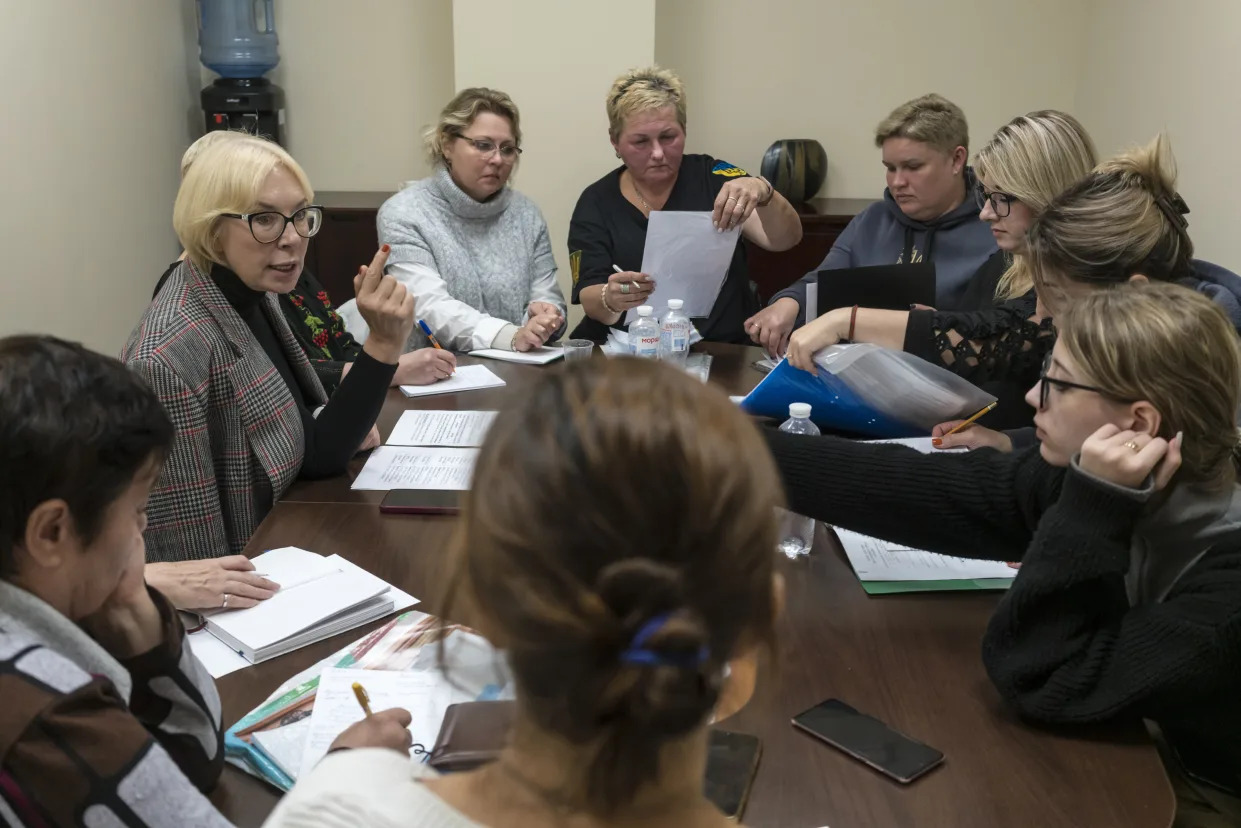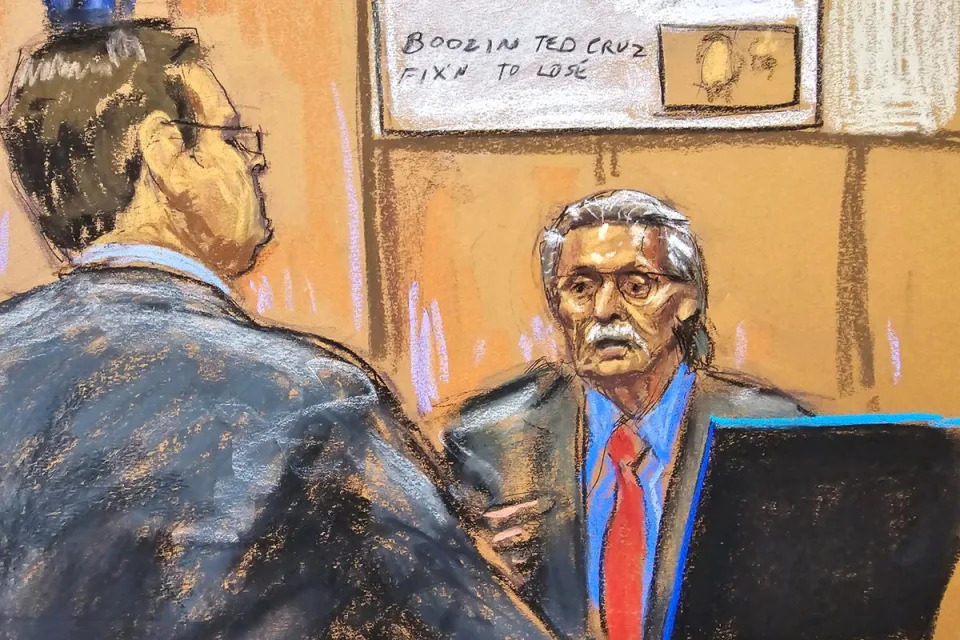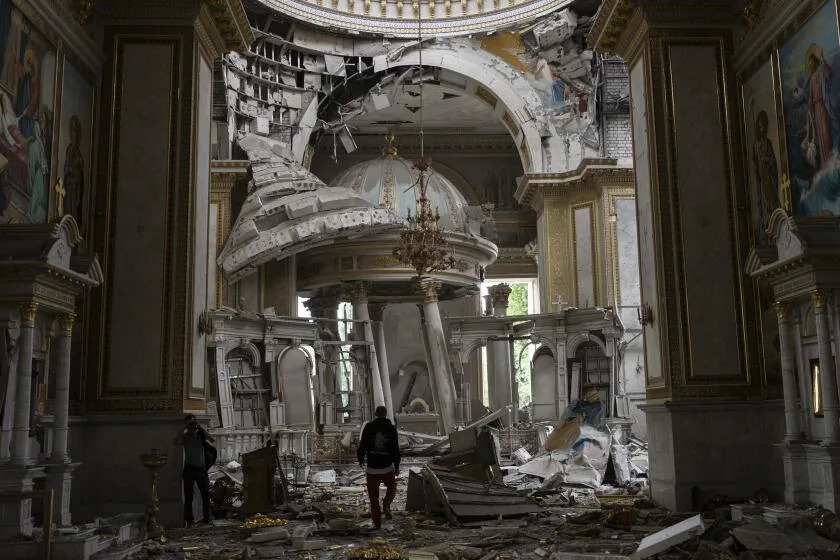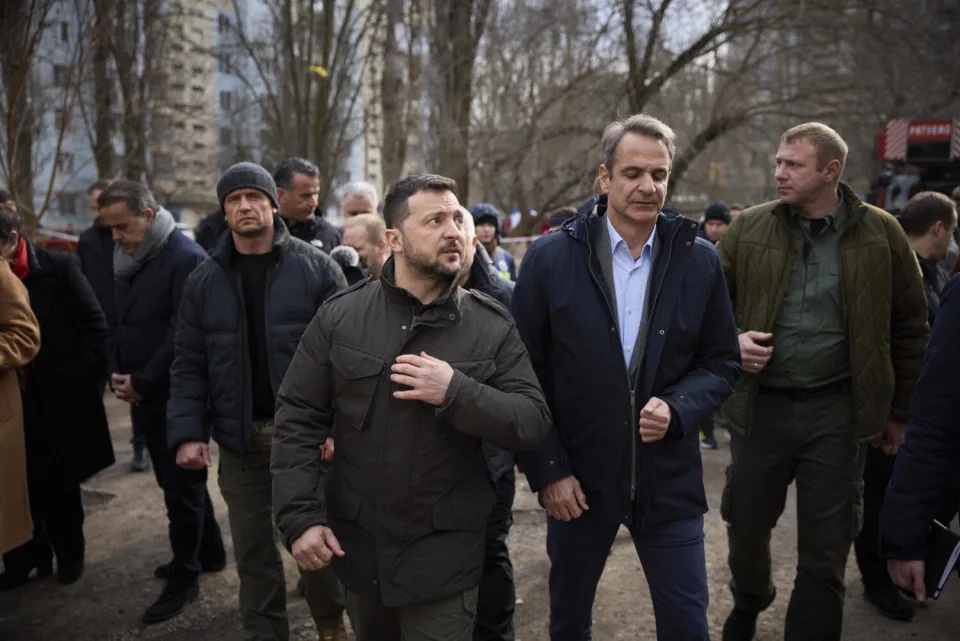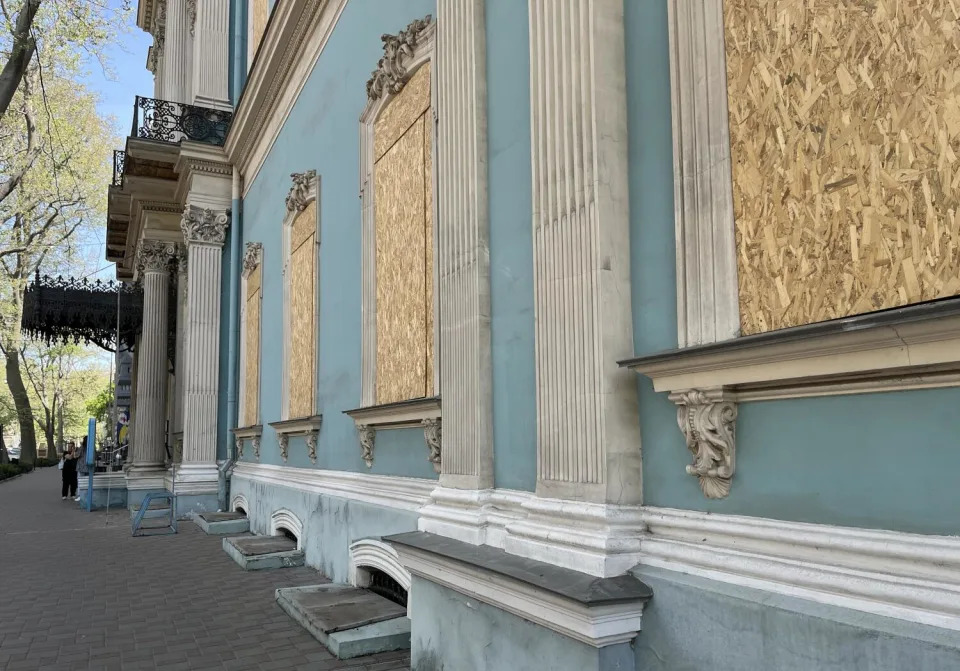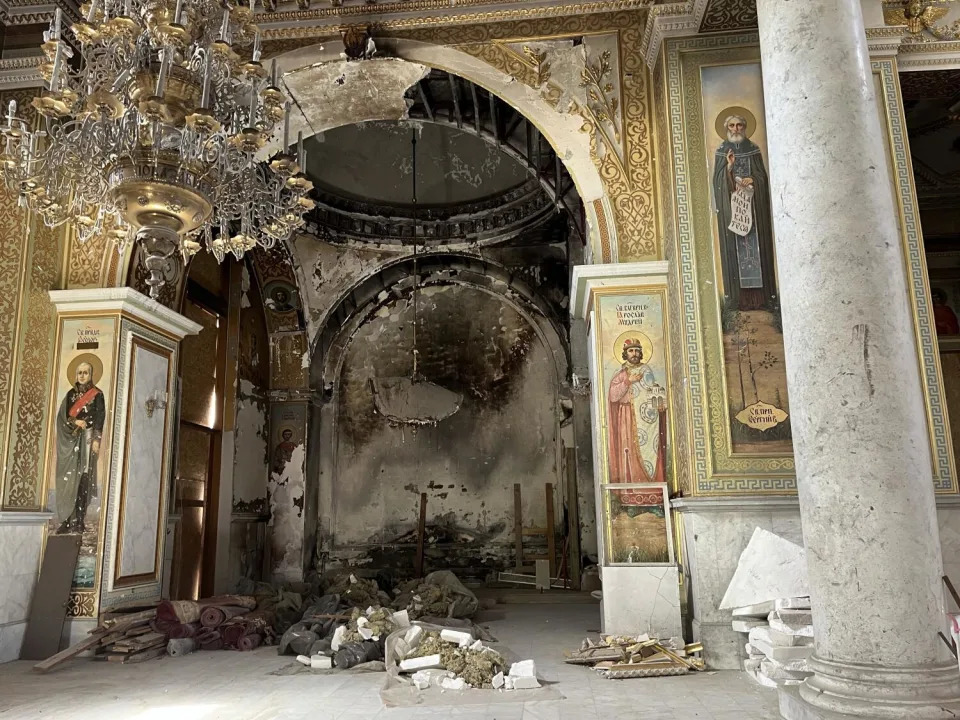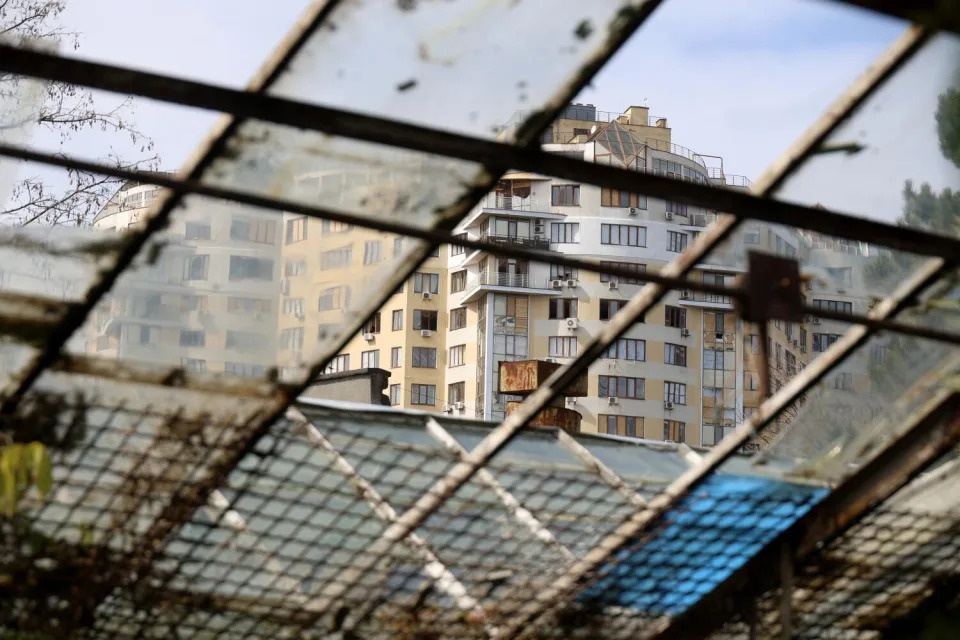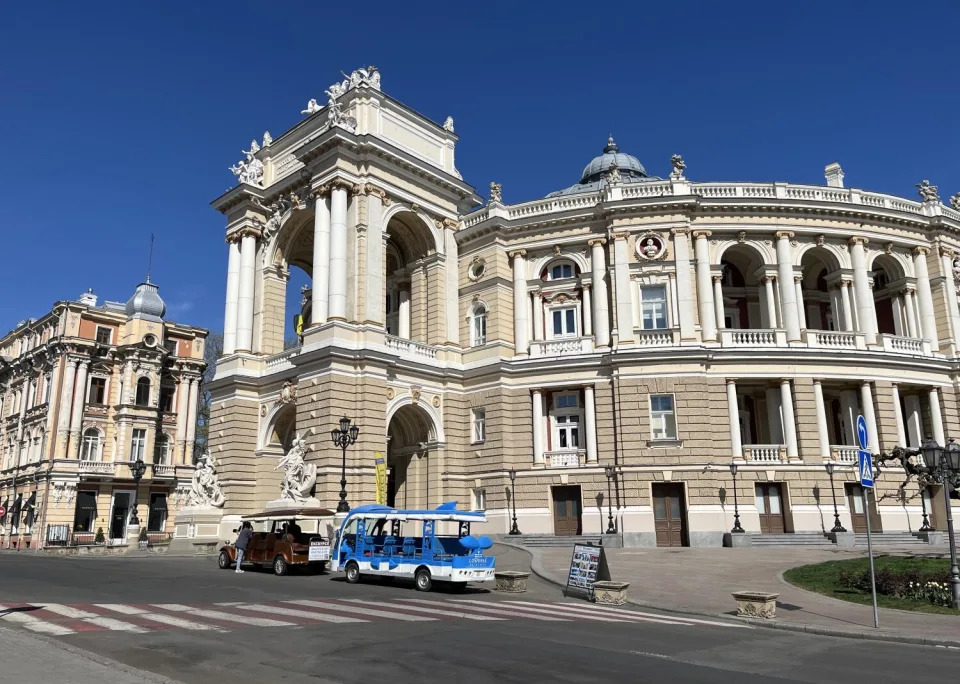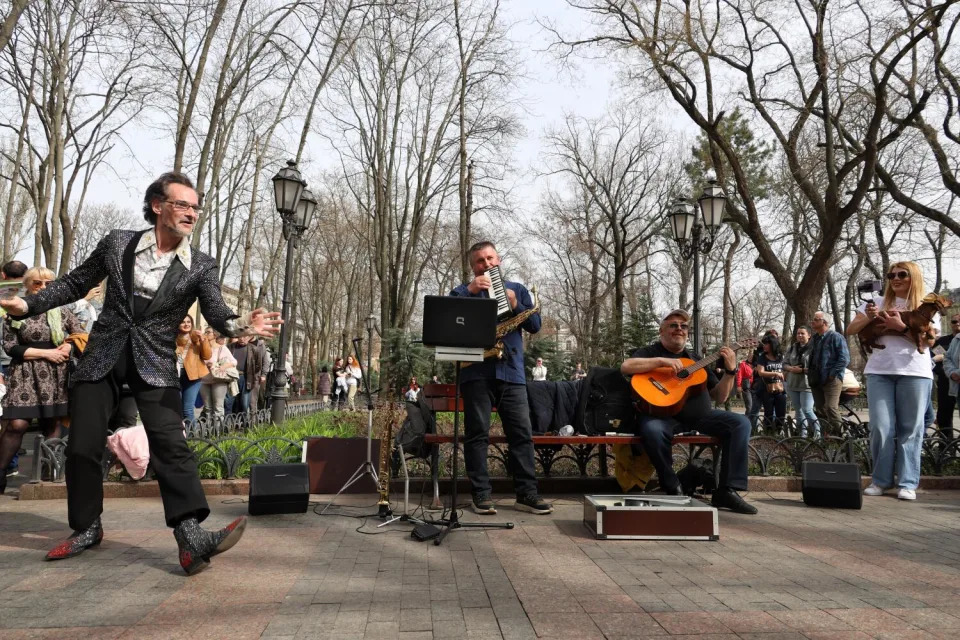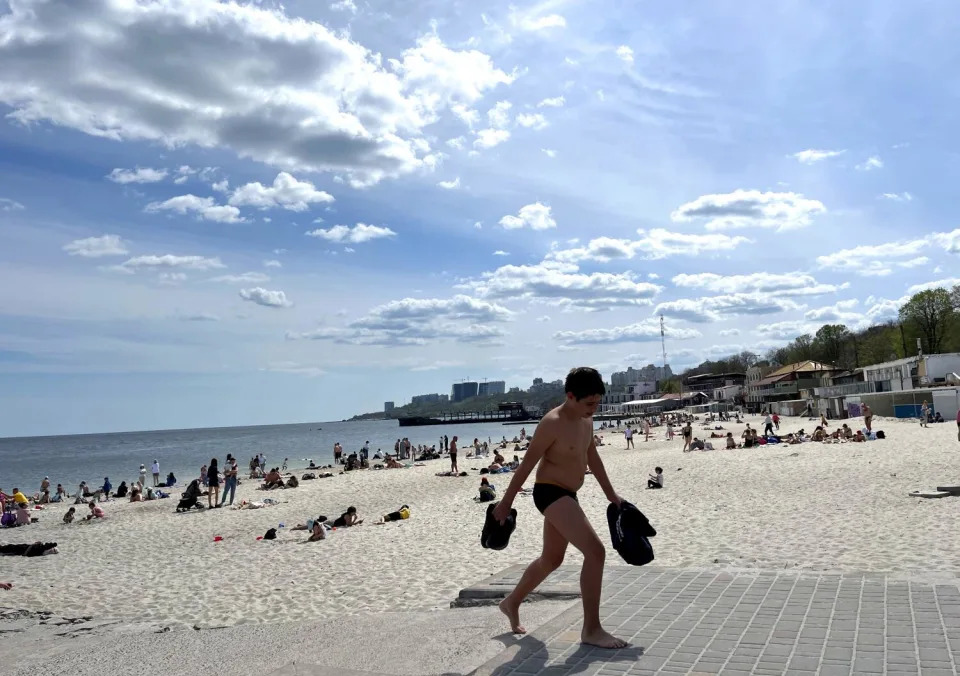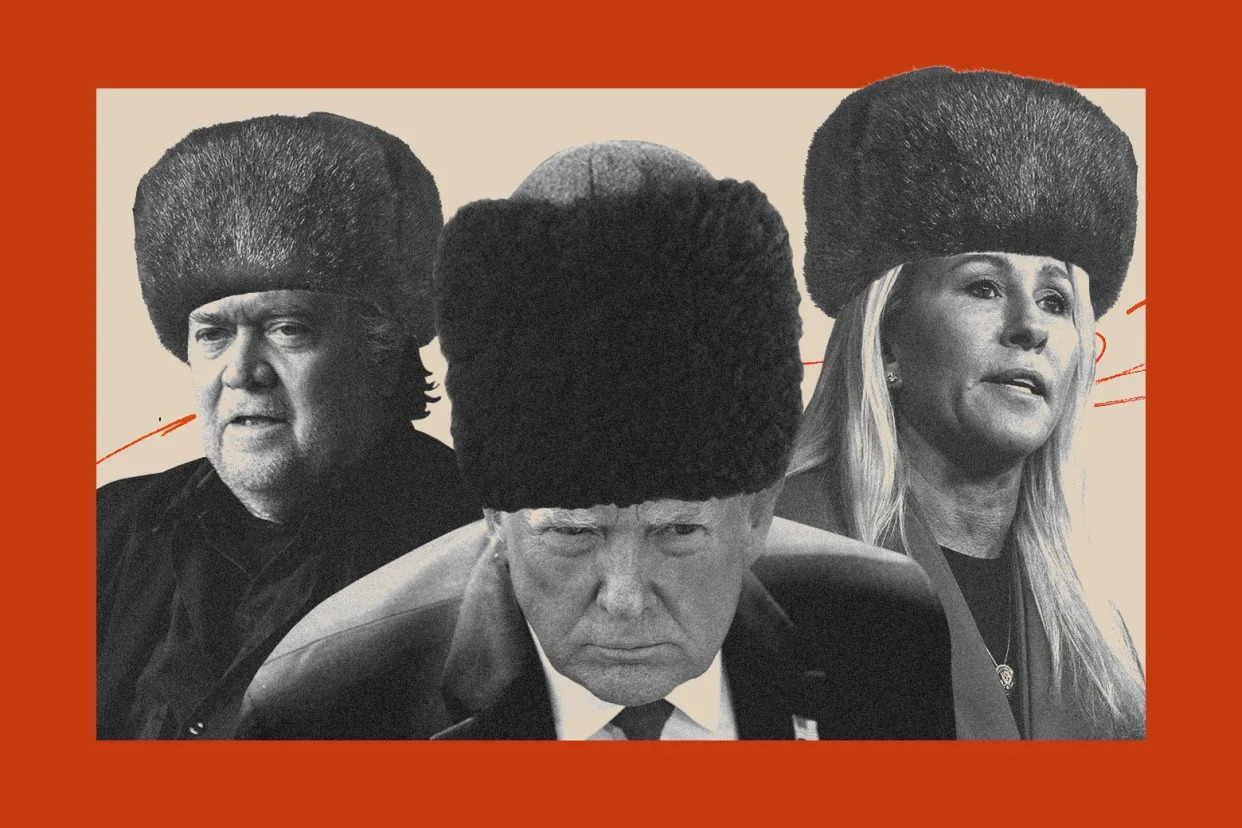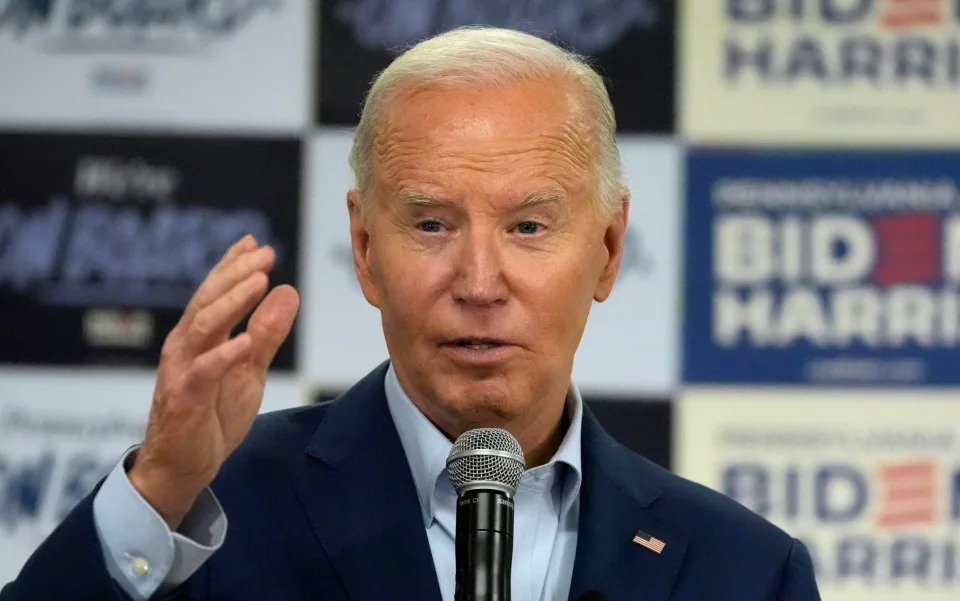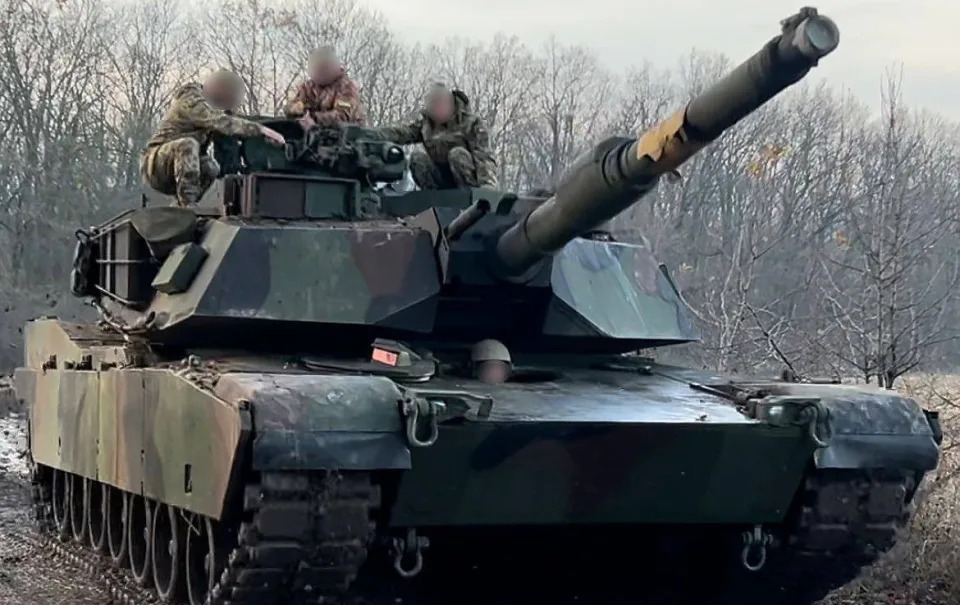BBC News
Secret document says Iran security forces molested and killed teen protester
Bertram Hill, Aida Miller and Michael Simkin – BBC Investigations April 29, 2024

An Iranian teenager was sexually assaulted and killed by three men working for Iran’s security forces, a leaked document understood to have been written by those forces says.
It has let us map what happened to 16-year-old Nika Shakarami who vanished from an anti-regime protest in 2022.
Her body was found nine days later. The government claimed she killed herself.
We put the report’s allegations to Iran’s government and its Revolutionary Guards. They did not respond.
Marked “Highly Confidential”, the report summarises a hearing on Nika’s case held by the Islamic Revolutionary Guard Corps (IRGC) – the security force that defends the country’s Islamic establishment. It includes what it says are the names of her killers and the senior commanders who tried to hide the truth.
It contains disturbing details of events in the back of an undercover van in which security forces were restraining Nika. These include:
- One of the men molested her while he was sitting on her
- Despite being handcuffed and restrained, she fought back, kicking and swearing
- An admission that this provoked the men to beat her with batons
There are numerous fake Iranian official documents in circulation, so the BBC spent months checking every detail with multiple sources.
Our extensive investigations indicate the papers we obtained do chronicle the teenager’s last movements.

Nika Shakarami’s disappearance and death were widely reported, and her picture has become synonymous with the fight by women in Iran for greater freedoms. As street protests spread across Iran in the autumn of 2022, her name was shouted by crowds furious at the country’s strict rules on the compulsory veil [hijab].
The Woman, Life, Freedom movement had been sparked just days earlier by the death of a 22-year-old woman, Mahsa Amini. She died from injuries sustained in police custody according to a UN fact-finding mission after being accused of not wearing her hijab properly.
In Nika’s case, her family found her body in a mortuary more than a week after she disappeared from a protest. But Iran’s authorities denied Nika’s death was connected to the demonstration and, after conducting their own investigation, said that she had died by suicide.
Just before she vanished, Nika was filmed on the evening of 20 September near Laleh Park in central Tehran, standing on a dumpster setting fire to hijabs.
Others around her chanted “death to the dictator” – referring to Iran’s Supreme Leader, Ayatollah Ali Khamenei.
What she could not have known at the time is that she was being watched, as the classified report makes clear.
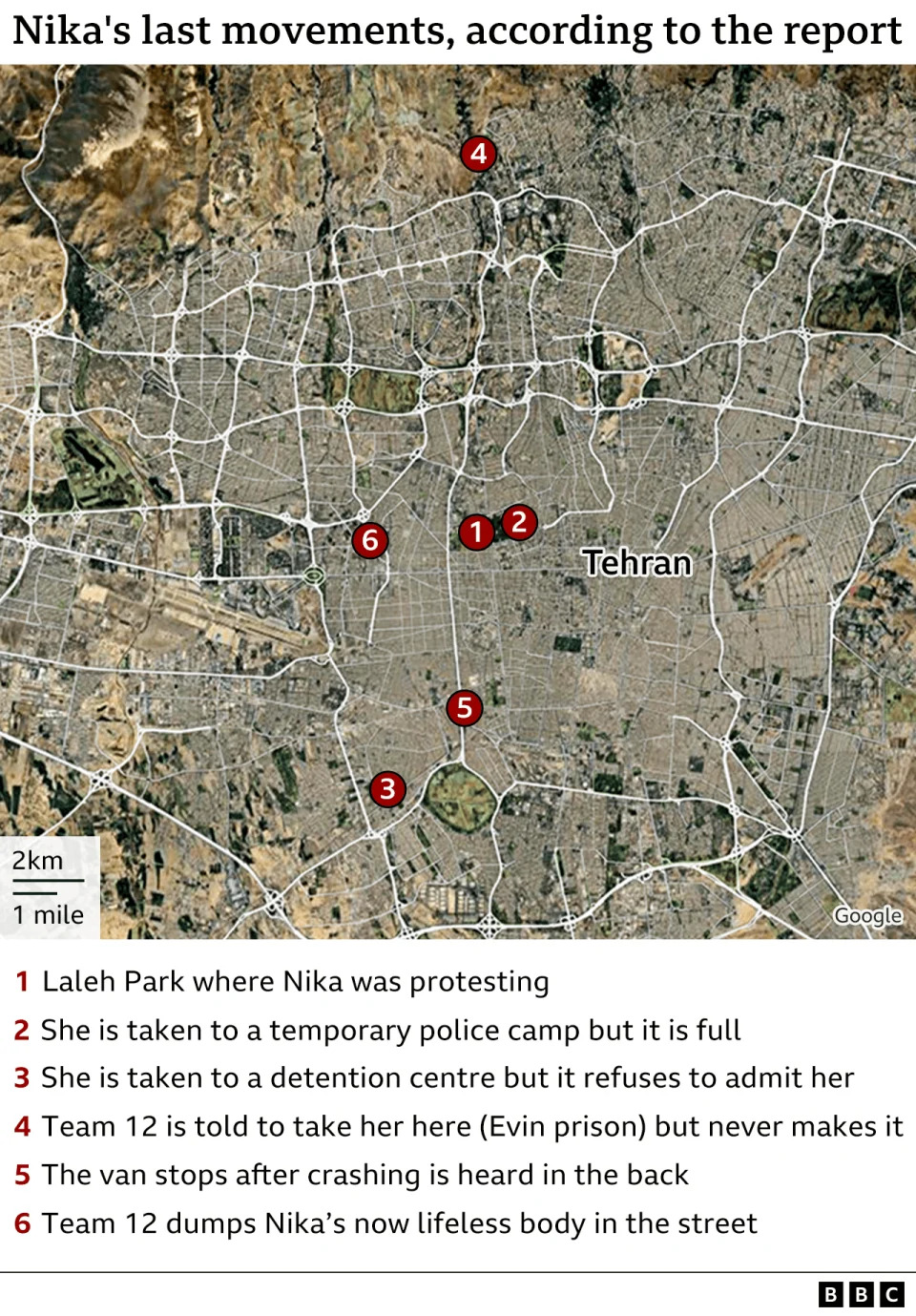
Addressed to the IRGC’s commander-in-chief, it says it is based on extensive talks with its teams that policed that protest.
Monitoring the demonstration were several undercover security units, the document’s account begins.
It says one of these – Team 12 – suspected the teenager “of leadership, due to her unconventional behaviour and repeated calls with her mobile phone”.
The team sent one of its operatives into the crowd, posing as a protester, to confirm Nika was indeed one of the demonstration’s leaders. Then, according to the report, he called in his team to arrest her. But she fled.
Her aunt had previously told BBC Persian that Nika rang a friend that night to say she was being chased by security forces.
Almost an hour passed before she was spotted again, says the report, when she was detained and put in the team’s vehicle – an unmarked freezer van.
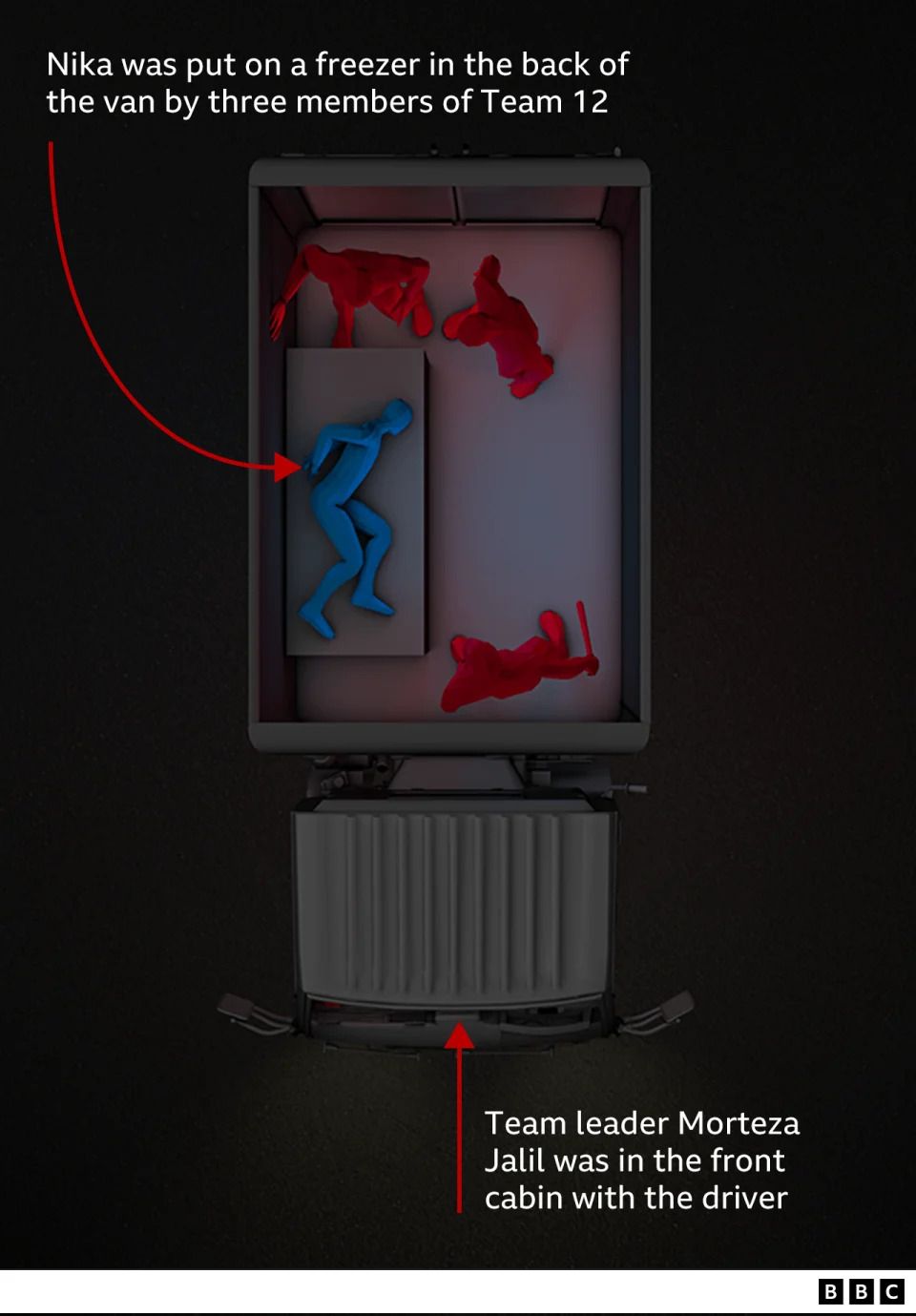
Nika was in the rear compartment with three Team 12 members – Arash Kalhor, Sadegh Monjazy, and Behrooz Sadeghy.
Their team leader Morteza Jalil was up front with the driver.
The group then attempted to find somewhere to take her, the report says.
They tried a temporary police camp nearby but were turned away because it was overcrowded.
So they continued to a detention centre, a 35-minute drive away, whose commander initially agreed to admit Nika. But then he changed his mind.
“The accused [Nika] was constantly swearing and chanting,” he told investigators for the report.
“At that time, there were 14 other female detainees at the station and my perception was that she could agitate the others.
“I was worried she would cause a riot”.
Morteza Jalil once again contacted his IRGC HQ for advice, says the report, and was told to head to Tehran’s notorious Evin Prison.
En route, he said he began to hear crashing noises behind him coming from the pitch-dark rear compartment of the van.
We know what he was hearing, from the testimony outlined in the document from the men guarding Nika in the back.
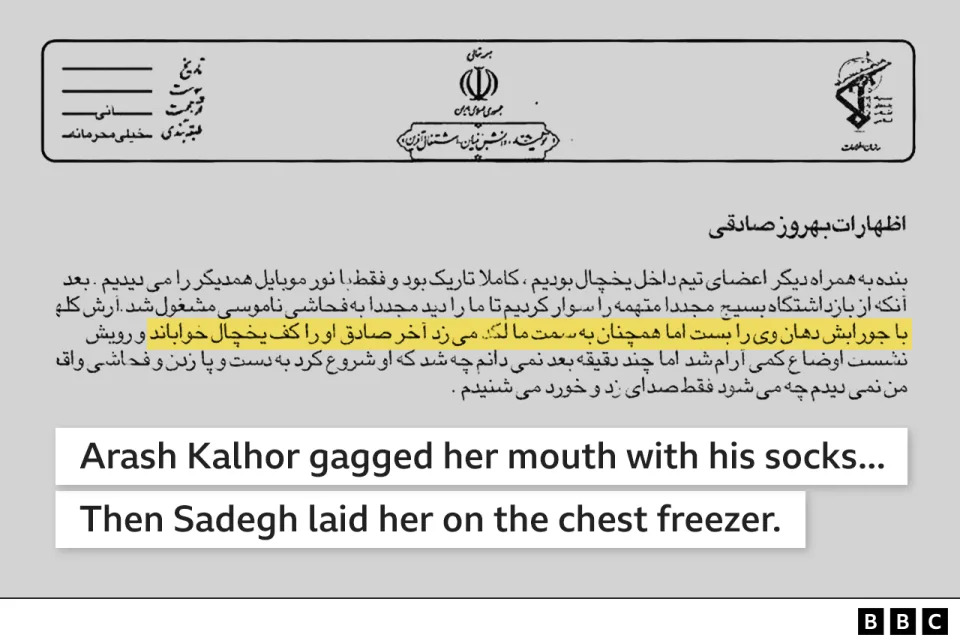
One of them, Behrooz Sadeghy, said as soon as she had been put back into the van after being rejected by the detention centre, Nika had started to swear and shout.
“Arash Kalhor gagged her mouth with his socks but she started struggling. Then Sadegh [Monjazy] laid her on the chest freezer and sat on her. The situation calmed,” he told investigators.
“I don’t know what happened, but after a few minutes she started swearing. I couldn’t see anything, I could only hear fighting and bashing.”
But Arash Kalhor gave further chilling details.
He says he briefly turned on his phone torch and saw Sadegh Monjazy “[has] put his hand inside her trousers”.
Arash Kalhor said after that they lost control.
“He doesn’t know… who [was doing it], but he could hear… the baton hitting the accused [Nika]… ‘I started to kick and punch but really didn’t know if I was hitting our guys or the accused.'”
But Sadegh Monjazy contradicted Arash Kalhor’s statement, which he said was motivated by professional jealousy. He denied putting his hand in her trousers – but said he could not deny that he became “aroused” while sitting on her and touched Nika’s buttocks.
He said this provoked Nika – despite the fact her hands were tied behind her back – to scratch him and jolt so that he fell over.
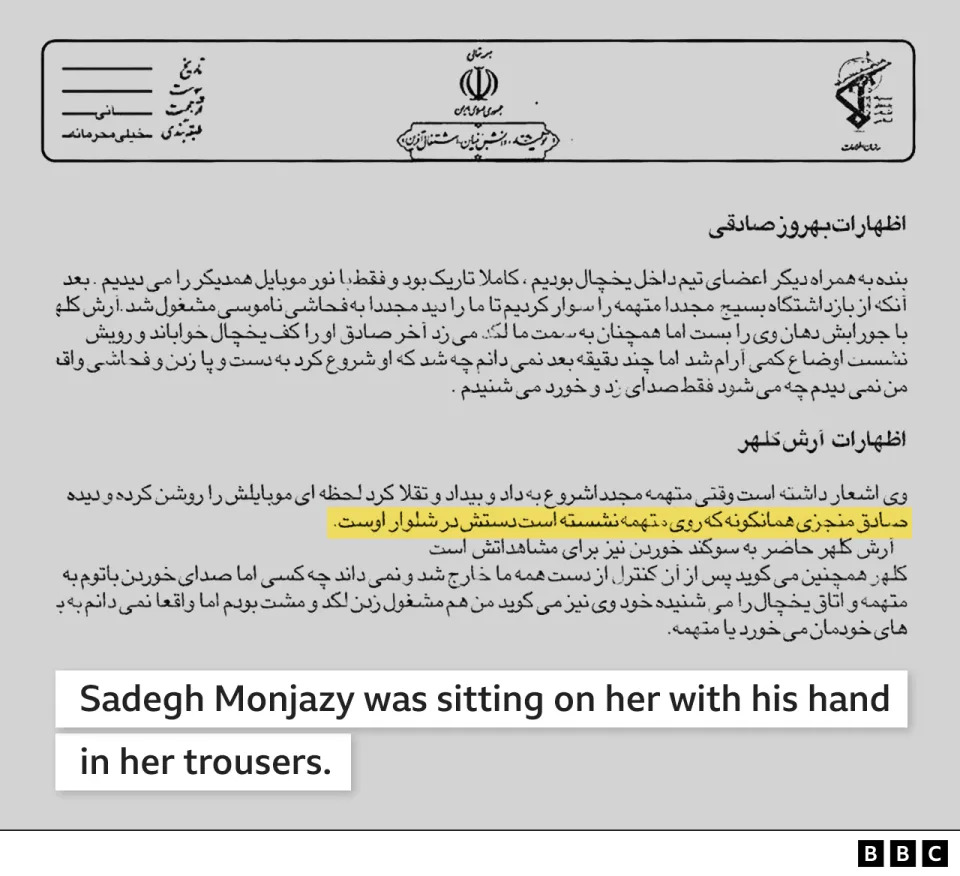
“She kicked at my face, so I had to defend myself.”
From the van’s cabin, Morteza Jalil ordered the driver to pull over.
He opened the rear door to discover Nika’s lifeless body.
He said he cleaned the blood from her face and head – “which were not in a good condition”.
This echoes the state in which Nika’s mother says she eventually found her daughter in the mortuary, and Nika’s death certificate – obtained by BBC Persian in October 2022 – which states she was killed by “multiple injuries caused by blows with a hard object”.
Team leader Morteza Jalil admitted he didn’t try to find out what had happened.
“I was only thinking about how to transfer her and didn’t ask any questions of anyone. I only asked: ‘Is she breathing?’ I think it was Behrooz Sadeghy who answered, ‘no, she is dead’.”
With a killing on his hands, Jalil called the IRGC’s HQ for a third time.
On this occasion, he spoke to a more senior officer, codenamed “Naeem 16”.
“We already had deaths in our stations, and I didn’t want the number to rise to 20,” Naeem 16 told the investigation. “Bringing her to the base wouldn’t have solved any problems.”
He told Jalil to simply “dump her on the street”. Jalil said they left Nika’s body in a quiet street under Tehran’s Yadegar-e-Emam highway.
The report concludes that a sexual assault caused the fight in the rear compartment of the van, and that strikes from Team 12 had caused Nika’s death.
“Three batons and three Tasers were all used. It is not clear which one of the blows was the fatal one,” it says.
The report contradicts the government’s narrative of what happened to Nika. Nearly a month after her funeral, state television broadcast the results of the official investigation, which said Nika had jumped to her death from a building.
It showed CCTV of a person it claimed was Nika entering an apartment block, but Nika’s mother told BBC Persian in a phone interview that she could not “under any circumstances, confirm that person is Nika”.
“We all know that they are lying,” Nasrin Shakarami later told a BBC documentary, discussing authorities’ claims about the deaths of protesters.

The BBC Eye investigation was not just concerned with the content of the report, but whether it could be trusted as an artefact.
Sometimes, what appear to be official Iranian documents and other materials circulating on the internet are found to have been faked.
Most of these counterfeit documents, however, are easy to spot because they clearly diverge from official formatting – showing erroneous spacing and letter headings, or containing significant grammatical or spelling errors.
They might also include the wrong official slogan or logo for the year they purport to originate from, or an anachronistic title for a government agency or department, for example.
Another indicator is language that does not match the very specific style that tends to be used by Iranian official bodies.
The document our investigation centred on contained a few such inconsistencies. For instance, the “Naja” police force quoted in the report was known as “Faraja” at the time.
Therefore, to further test the document’s veracity, we gave it to a former Iranian intelligence officer who has seen hundreds of legitimate ones.
He rang the IRGC archive – using an official code issued each day to senior intelligence officers in Iran – to check if the case file this report was allegedly part of really existed and what it was about.
He received confirmation that it did, and that the report’s number showed it was part of a 322-page case file on anti-government protesters in 2022.
While we can never be 100% certain, this gave us confidence that it is genuine.
His unique access to the IRGC also helped us iron out another mystery – the identity of “Naeem 16”, the man who told the team to dump Nika’s body.
The former intelligence officer did this by making another call – this time to someone inside Iran’s military apparatus. He was told Naeem 16 is the call sign for a Captain Mohammad Zamani, serving in the IRGC.
That name is listed as one of the attendees at the five-hour hearing into Nika’s death that the report summarises.
We put the allegations to the IRGC and the Iranian government. They did not respond.
The men responsible for Nika’s death were not punished, so far as we know.

A clue as to why that might be the case can be found in the document itself. All of Team 12 – who were at the hearing – are listed in the report and to the right of their names is the group to which they belong: “Hezbollah”.
This refers to an Iranian paramilitary group, Hezbollah, unrelated to the Lebanese group of the same name. Its members are used by the IRGC but sometimes operate outside its jurisdiction, as the report seems to acknowledge:
“Since the above persons belonged to the forces of Hezbollah, following up this case beyond obtaining the necessary commitments and security guarantees has not been possible,” it says.
IRGC officer Naeem 16, on the other hand, was given a written reprimand, it adds.
As many as 551 protesters were killed by security forces during Iran’s Woman, Life, Freedom movement, most of them by gunfire, according to the UN’s fact-finding mission.
The protests subsided after a few months due to the bloody crackdown by security forces. There followed a lull in activity by Iran’s morality police, but a new crackdown on breaches of the Islamic dress code began earlier this month.
Among those to have been arrested is Nika’s elder sister, Aida..

